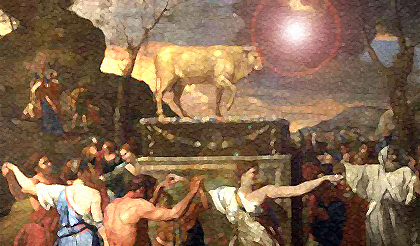Newman argues in Section III that the doctrines of the (Catholic) faith are "members of one family, and suggestive, or correlative, or confirmatory, or illustrative of each other." He writes:
… the very scale on which they have been made, their high antiquity yet present promise, their gradual formation yet precision, their harmonious order, dispose the imagination most forcibly towards the belief that a teaching so consistent with itself, so well balanced, so young and so old, not obsolete after so many centuries, but vigorous and progressive still, is the very development contemplated in the Divine Scheme.
Now, it is undoubtedly true that each doctrine of the Christian faith has certain implications and tends toward certain conclusions. For someone like Newman, then, to seek to postulate an idea like papal infallibility he would certainly ground it in prior-held notions about divine revelation and the Church as pillar and ground of the truth. So although I may disagree with many of Newman’s conclusions, I still can recognize how he arrived at them.One furnishes evidence to another, and all to each of them; if this is proved, that becomes probable; if this and that are both probable, but for different reasons, each adds to the other its own probability. The Incarnation is the antecedent of the doctrine of Mediation, and the archetype both of the Sacramental principle and of the merits of Saints. From the doctrine of Mediation follow the Atonement, the Mass, the merits of Martyrs and Saints, their invocation and cultus. From the Sacramental principle come the Sacraments properly so called; the unity of the Church, and the Holy See as its type and centre; the authority of Councils; the sanctity of rites; the veneration of holy places, shrines, images, vessels, furniture, and vestments. Of the Sacraments, Baptism is developed into Confirmation on the one hand; into Penance, Purgatory, and Indulgences on the other; and the Eucharist into the Real Presence, adoration of the Host, Resurrection of the body, and the virtue of relics. Again, the doctrine of the Sacraments leads to the doctrine of Justification; Justification to that of Original Sin; Original Sin to the merit of Celibacy. Nor do these separate developments stand independent of each other, but by cross relations they are connected, and grow together while they grow from one….
You must accept the whole or reject the whole; attenuation does but enfeeble, and amputation mutilate. It is trifling to receive all but something which is as integral as any other portion; and, on the other hand, it is a solemn thing to accept any part, for, before you know where you are, you may be carried on by a stern logical necessity to accept the whole.
But what happens when the proposed development falls not only into the category of doctrine, but also of history?
Take, for example, the bodily assumption of Mary. It’s one thing to say that the doctrine of her being whisked up to heaven is a logical corollary of the doctrine that she was immaculately conceived. But it takes a lot more, umm, gumption to dogmatically insist that, as a matter of historical record, Mary in fact floated up into the sky and was received into glory (especially when some 1,800 years had transpired between this historical event and its being pronounced as church dogma).
Now, I’ve not studied this matter in any depth, so it may very well be the case that loads of people were standing around watching her fly off into space who then recorded the miraculous event in their journals (which is certainly what one would expect to have happened if they saw such a thing: the news of the event would immediately spread like wildfire). But on the other hand, if the first person to have borne testimony to Mary’s bodily assumption was not an actual contemporary of the Blessed Mother’s, but lived, say, a few generations later, then would not the most plausible explanation be that we are dealing with a legend and not an actual historical event?
I mean, if Jesus’ resurrection—a remarkable occurrence if there ever was one—went completely unnoticed by every single person who knew him, but then was spoken about a century or two later, we would be suspicious, wouldn’t we? Or take a more contemporary example: If someone writes a biography of Ronald Reagan next year that claims that the former president received an extra terrestrial visitor to the White House in broad daylight in the presence of the entire press corps, wouldn’t we wonder why no one has heard if such an event before? Or, if the event happened in secret (explaining why it wasn’t reported at the time), then our first question would be, "How did this author uniquely come by this information if he wasn’t there?"
My point, you ask? If Rome’s claim is that she only elucidates the initial apostolic deposit of faith but never expands its content, then it would follow that if the apostle John’s next door neighbor asked daily how Mary was doing, at some point he would have received the reply, "Great! She was bodily received into glory a couple hours ago, haven't you heard?"
But if Mary was taken into heaven as an actual historical event, and if John didn’t himself know about it, then it would seem that he wasn’t exactly keeping the close eye on her that her Son asked him to.














